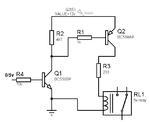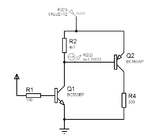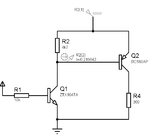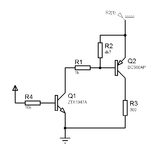ferrariracers1
Newbie level 6
Hello everybody!... I hope you all are fine......Recently i am stuck with a problem of connecting the output of an NPN transistor to the input of a PNP transistor....I cant do the connection....So it would be very helpful to me if any one of you can explain it to me as to how can i connect the circuit!!.....thank you!!!:grin:



